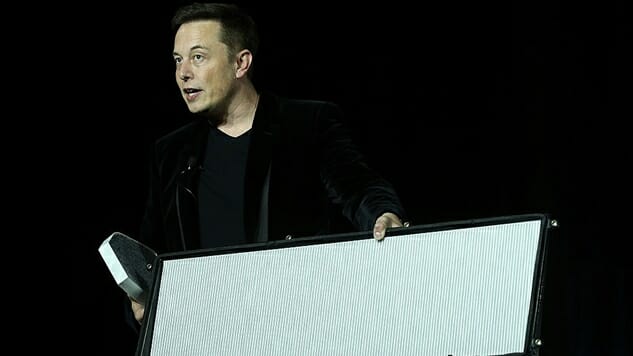Elon Musk’s Tesla Solar Roof is Coming to Your Neighborhood Later this Year
Photo by Justin Sullivan/Getty
2016’s announcement of Tesla’s Solar Roof seemed like an expensive pipedream to many observers of the solar industry. After all, Tesla’s owner Elon Musk had just acquired a vertically integrated solar company—Solar City—and was still pushing huge projects like consumer space exploration through his company SpaceX. The man obviously has big dreams, but are they feasible?
For his Solar Roof, Musk seems intent on pushing forward and now states that official production on the new energy-efficient tiles will begin mid-2017 with a market launch date later in the year. For buyers who have already been put on Tesla’s waiting list, this means they may be the first batch of guinea pigs in Musk’s continuing foray into consumer-facing renewables.
So what exactly is the Solar Roof, and why is it different?
Out with the Old, In with the New
Anyone who has ever spotted a home fitted with large solar roof panels knows that on first impression, the panels look out of place: They appear bulky and metallic, despite the many advantages they provide. One common complaint is that modules are either dark blue or black, which virtually never meshes with the other parts of the home. And regardless of home construction type, builders simply aren’t modeling homes with panel installations in mind – once again, solar panels come across as ill-fitted, late additions to roofs.
-

-

-

-

-

-

-

-

-

-

-

-

-

-

-

-

-

-

-

-

-

-

-

-

-

-

-

-

-

-

-

-

-

-

-

-

-

-

-

-








































